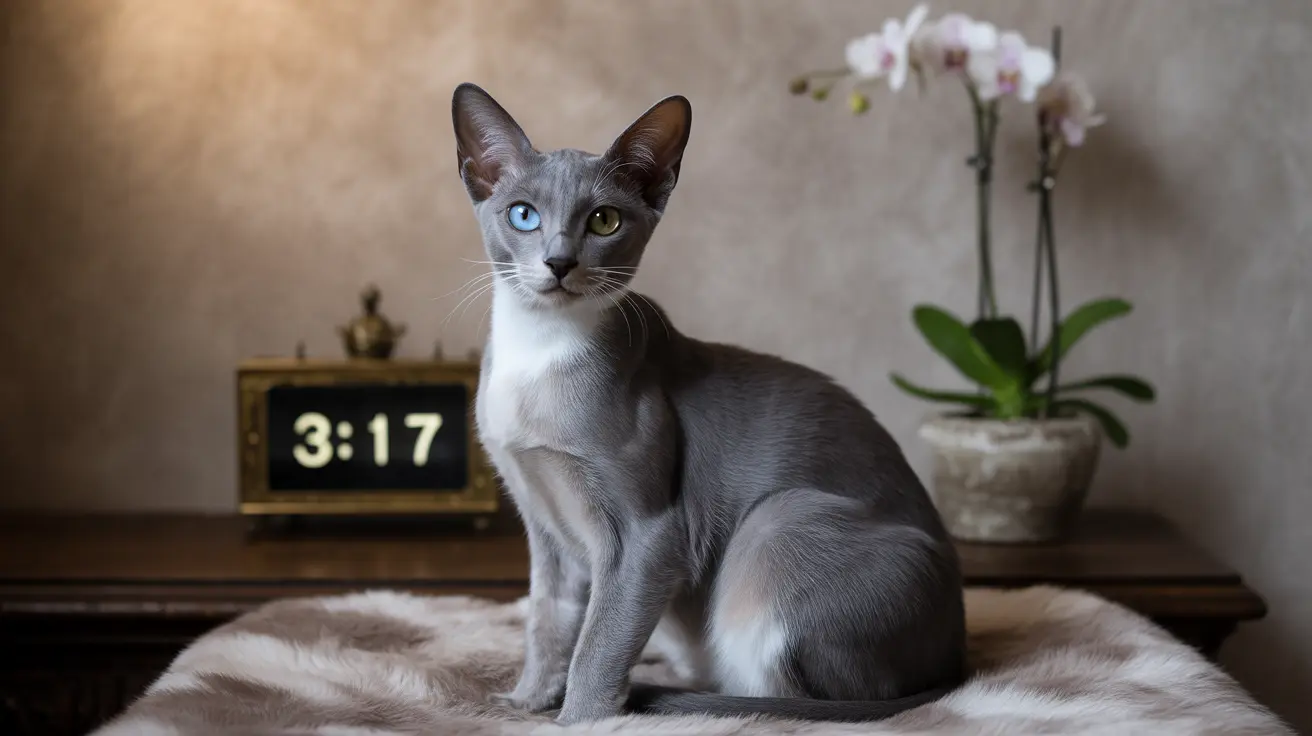Understanding Heterochromia in Cats
Heterochromia, also known as odd-eyed coloration, occurs when a cat has two different colored irises. This condition most commonly manifests as one blue eye and one green, golden, or copper eye. The phenomenon results from variations in melanin distribution during early development, with one eye receiving different amounts of this crucial pigment than the other.
Types of Feline Heterochromia
There are three distinct types of heterochromia in cats:
- Complete heterochromia: Each eye is a completely different color
- Partial heterochromia: Part of one iris differs in color
- Central heterochromia: The inner ring of the iris differs from the outer color
The Rarity of Heterochromia
Heterochromia is considered relatively rare in the general cat population, affecting approximately 1 in 1,000 cats. However, this frequency varies significantly depending on coat color and breed. White cats, in particular, are much more likely to exhibit this trait due to genetic factors.
Genetic Factors and Prevalence
The condition is most commonly associated with white or partially white cats due to the presence of the white spotting gene (W). This gene can prevent melanin from reaching one eye during development, resulting in a blue eye, while the other eye develops a different color.
Breeds Most Likely to Have Heterochromia
Certain cat breeds are more predisposed to developing heterochromia than others. The most common breeds include:
- Turkish Van
- Turkish Angora
- Khao Manee
- Persian
- Japanese Bobtail
- Oriental Shorthair
Health Considerations and Implications
While heterochromia itself is typically harmless, it can be associated with certain health conditions, particularly in white cats. The most notable connection is with congenital deafness. White cats with one blue eye have approximately a 40% chance of being deaf on the same side as the blue eye.
In rare cases, heterochromia that develops later in life (acquired heterochromia) may indicate an underlying health issue and should be evaluated by a veterinarian.
Frequently Asked Questions
How rare is heterochromia in cats and which coat colors are most commonly affected?
Heterochromia affects approximately 1 in 1,000 cats, making it relatively rare. It's most commonly found in white or partially white cats due to specific genetic factors affecting pigmentation.
What genetic factors cause heterochromia in cats and can it be inherited?
Heterochromia is primarily caused by the white spotting gene (W) and can be inherited. This gene affects melanin distribution during development, potentially resulting in different colored eyes.
Which cat breeds are most likely to have heterochromia or odd-colored eyes?
Turkish Van, Turkish Angora, Khao Manee, Persian, and Oriental Shorthair cats are most likely to exhibit heterochromia due to their genetic predispositions.
Does heterochromia in white cats increase the risk of deafness?
Yes, white cats with heterochromia, particularly those with blue eyes, have an increased risk of deafness. Those with one blue eye have about a 40% chance of being deaf on the blue-eyed side.
Can heterochromia in cats develop later in life, and if so, what health issues might it indicate?
While rare, acquired heterochromia can develop later in life and may indicate underlying health issues such as inflammation, injury, or certain medical conditions. Any change in eye color should be evaluated by a veterinarian.






